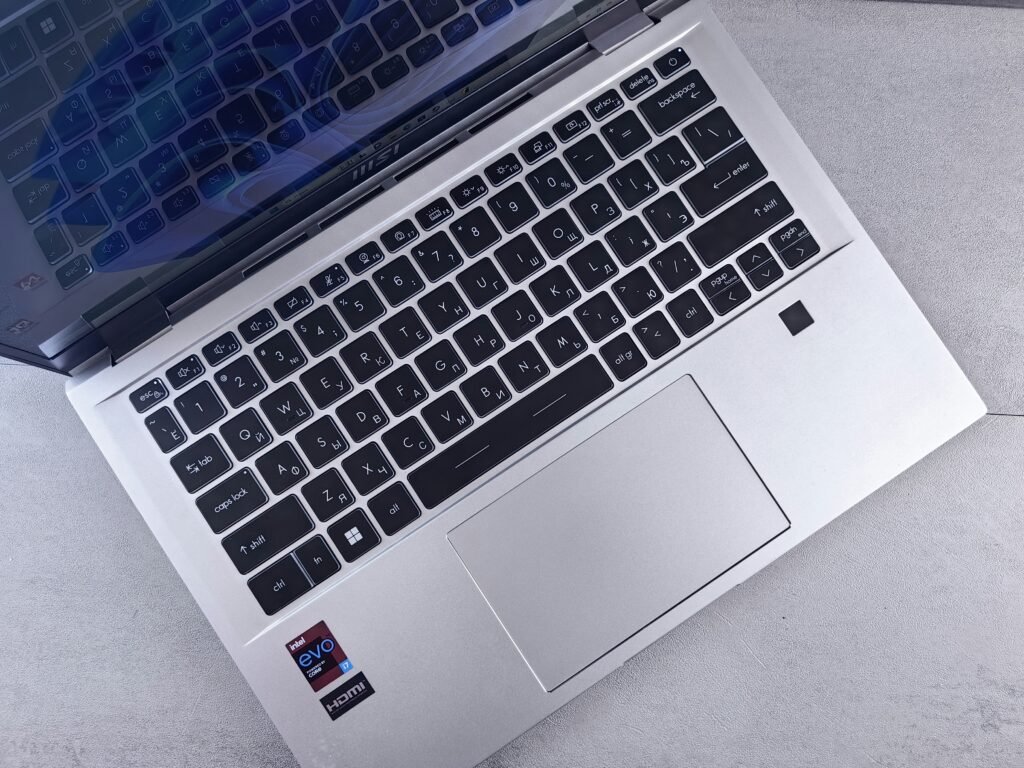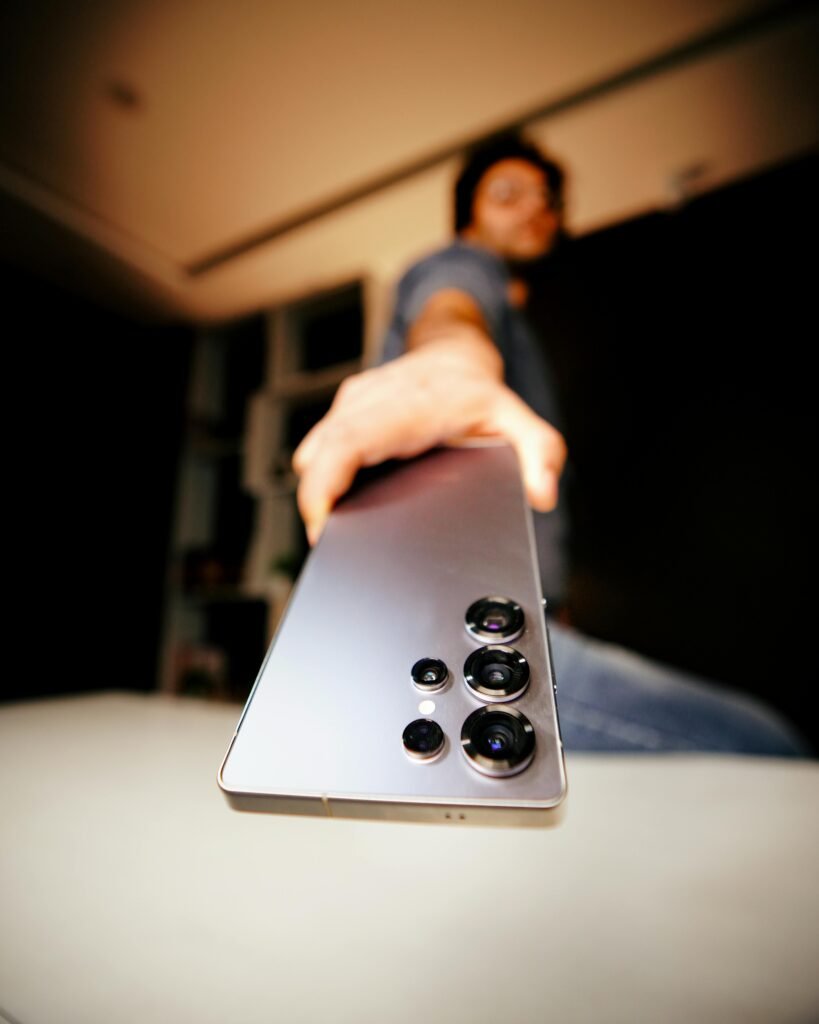
Introduction to the Future of Computing
The landscape of computing is undergoing a remarkable transformation, driven by rapid technological advancements that continuously reshape how we interact with devices in our daily lives. As innovations in hardware, software, and energy efficiency emerge, the future of computers stands poised to redefine our understanding of mobility and performance. Miniature laptops are at the forefront of this evolution, showcasing how compact designs can combine power with portability.
In recent years, we have witnessed significant developments in processing power, which now allows these smaller devices to execute complex tasks that were once the domain of larger, more cumbersome machines. The integration of advanced processors, solid-state drives, and energy-efficient graphics capabilities has enabled laptops to not only shrink in size but also to enhance their overall functionality. This evolution is a testament to the ingenuity of engineers and designers who strive to address consumer needs for both simplicity and efficiency.
The implications of this shift affect various sectors, from business to entertainment. As miniature laptops become more prevalent, their applications widen, accommodating professionals who require computing power on the go and students who benefit from lightweight devices for educational purposes. Moreover, the rise of remote work and online learning has accelerated the demand for versatile machines that can perform in diverse environments.
As we delve deeper into the world of miniature laptops and explore how their size and capabilities are evolving, it is essential to appreciate the technological milestones that have paved the way for these advancements. These changes not only enhance individual productivity but also contribute to broader societal shifts that redefine our interaction with technology. The future of computing is indeed promising, and the journey has only just begun.
The Evolution of Laptops Over the Decades
The history of laptops can be traced back to the early 1980s, with the introduction of portable computing devices that were far more substantial in size than what we see today. The first commercially available laptop, the Osborne 1, weighed about 24.5 pounds and featured a small 5-inch screen. Despite its bulkiness, it showcased the potential of portable computers, setting the stage for future innovations in design and technology.
As technology advanced, the 1990s saw the arrival of more user-friendly and lighter models. The introduction of the Apple PowerBook series in 1991 marked a significant milestone, combining a compact design with a trackpad and improved battery life. Concurrently, companies like IBM were developing their own versions, refining keyboard layouts and overall usability, which facilitated the shift from desktop PCs to portable solutions.
The 2000s further propelled the evolution of laptops, driven by advancements in materials and processing power. The introduction of lithium-ion batteries contributed to significantly improved battery life, while the development of smaller, more efficient processors allowed manufacturers to create thinner, more powerful devices. This era also witnessed the growth of the Ultrabook lineup, characterized by their lightweight, slim designs without compromising performance.
With the advancement of touchscreen technology and the rising popularity of 2-in-1 laptops, the 2010s reinforced the trend toward compact devices. The integration of high-resolution displays and solid-state drives (SSDs) revolutionized data access and visual quality, enabling users to enjoy a rich multimedia experience on a miniature scale. Notably, significant contributions from companies such as Microsoft and Apple have led to the widespread adoption of sleek, responsive models that cater to various consumer needs.
In recent years, the emergence of miniature laptops has demonstrated a continuous focus on portability and efficiency, as manufacturers strive to create versatile devices that accommodate both casual users and professionals alike. As we look towards the future, it is evident that the evolution of laptops will persist, continuously adapting to the demands of an ever-evolving digital landscape, marking a trajectory of impressive innovation.
Understanding Small Laptop Technology
The evolution of small laptops has been driven by significant advancements in various hardware components, enabling these devices to maximize performance while minimizing size. A critical element of this optimization lies within the processors. Modern small laptops frequently employ low-power processors that optimize performance without generating excessive heat or consuming large amounts of energy. For instance, processors such as Intel’s Core i5 and i7 series, along with ARM architectures, are designed specifically to deliver robust performance while maintaining efficiency, making them ideal for miniature devices.
Equally important is the memory and storage technology that propels small laptops forward. Manufacturers have increasingly embraced solid-state drives (SSDs) instead of traditional hard drives. SSDs not only provide faster data access speeds but also reduce the overall weight and size of laptops. Coupled with advancements in memory technology, such as LPDDR4 and LPDDR5 RAM, small laptops can effectively support multitasking and run demanding applications. These memory solutions allow users the experience of operating heavier programs in a compact environment.
Battery life remains a quintessential concern for users of portable technology. Fortunately, breakthroughs in battery technology, including lithium-polymer batteries, have enhanced energy efficiency without compromising performance. These modern batteries are capable of sustaining longer operation times, addressing one of the most significant drawbacks associated with small laptops. As hardware components continue to get more efficient, future iterations are expected to further enhance battery longevity.
In addition to processors, memory, storage, and battery technology, small laptops often incorporate innovative cooling solutions. These advancements allow for effective heat management within tight confines. Improved thermal designs ensure that performance remains stable without causing discomfort to users during extended usage.
Overall, the integration of these technological advancements exemplifies how small laptops are redefining computing. By leveraging optimized hardware, manufacturers are pushing the boundaries of what miniature laptops can achieve while preserving the user experience.
The Role of Portability in Modern Computing
In today’s fast-paced digital age, portability has emerged as a crucial aspect of computing. With people leading increasingly mobile lifestyles, the demand for smaller, lightweight laptops that can deliver powerful performance on the go is more significant than ever. The trend towards miniature laptops underscores this shift, as they provide the mobility necessary for remote work, travel, and a more flexible lifestyle.
The work-from-home phenomenon has accelerated the quest for portable computing solutions. Many professionals now seek devices that are not only compact but also capable of supporting complex applications and multitasking. Miniature laptops, engineered to maximize efficiency while minimizing physical bulk, have become essential tools for those who operate from home or various locations. These devices facilitate seamless transitions between workspaces, allowing users to stay productive wherever they are.
In addition to work-from-home trends, the rise of digital nomadism exemplifies the increasing desire for portability. Many individuals are choosing lifestyles that prioritize travel and exploration, requiring computing devices that can keep pace with their adventures. Miniature laptops fit this bill, combining essential functionalities with ergonomic designs that are easy to transport. As more people embrace this nomadic lifestyle, the need for compact, high-performance laptops will continue to grow, driving innovations in the technological landscape.
Furthermore, the rise of online learning and remote collaboration tools has added another layer of demand for portable computers. Students and professionals alike require devices that can handle video conferencing, collaborative projects, and extensive research without compromising on performance. In this context, the role of portability becomes vital; devices must be lightweight yet robust enough to accommodate the diverse needs of modern users. Overall, the future of computing is leaning heavily towards smaller, more portable laptops that cater to the demands of a mobile society.
Challenges of Small Laptop Design
The design of small laptops entails a multitude of challenges that manufacturers must navigate to deliver efficient and functional devices. One of the primary concerns is overheating. In compact laptops, the limited internal space restricts airflow, making it difficult for heat generated by the processor and other components to dissipate effectively. As chips grow more powerful and demanding, designers must innovate cooling solutions. Techniques such as heat pipes, advanced thermal pastes, and even built-in fans help mitigate overheating, but balancing performance with temperature management remains a complex task.
Another significant challenge is component placement within a reduced form factor. In standard-sized laptops, designers have the luxury of arranging hardware components with ample space. However, miniature laptops often require a more creative approach to integrate essential elements, including the motherboard, storage, and battery. This necessitates the use of smaller, more efficient components, such as M.2 SSDs and low-profile RAM, which can complicate the design process. Prioritizing energy efficiency and performance while managing the constraint of space involves meticulous planning and engineering.
Screen size and resolution are also critical considerations in small laptop design. Designers face the dilemma of providing adequate display real estate while maintaining portability. Many manufacturers are opting for high-resolution screens with slim bezels to maximize usable space without sacrificing image quality. Furthermore, ensuring effective keyboard usability poses additional challenges; small laptops often feature compact keyboards that can hinder typing comfort. To counter this, ergonomic layouts and haptic feedback mechanisms are being incorporated.
In conclusion, the challenges of designing miniature laptops are numerous and multifaceted. From overheating and component configuration to screen size and keyboard ergonomics, each aspect requires careful consideration. Manufacturers are continuously developing innovative solutions to overcome these obstacles, pushing the boundaries of technology in the quest for smaller, more efficient laptops.
The Future: What’s Next for Laptops?
The evolution of laptops has been marked by remarkable advancements in technology, culminating in devices that are not only powerful but also increasingly portable. Looking ahead, several key trends are poised to redefine the future of laptops. One of the most exciting developments is the emergence of foldable screens. This innovative technology allows for laptops that can transform from a traditional clamshell design into a tablet-like format, providing enhanced versatility for users. The ability to fold screens opens new possibilities for multitasking and productivity, enabling users to engage with multiple applications simultaneously while maintaining a compact form factor.
Another area of significant progress lies in battery technology. Current innovations aim to increase energy density and reduce charging times, ultimately enabling laptops to operate for extended periods without the need for frequent recharging. Advancements such as solid-state batteries and energy-efficient processors could potentially lead to laptops with battery life measured in days rather than hours. This shift would fundamentally change how professionals and consumers use their laptops, facilitating a truly mobile computing experience.
Furthermore, the integration of artificial intelligence (AI) into laptop systems is already underway and promises to enhance user experience dramatically. AI-driven features, such as personalized settings and predictive analytics, can streamline tasks, automate routine processes, and even improve security through biometric authentication. As AI continues to evolve, we can anticipate laptops that not only respond to user commands but also learn from user behavior, creating more intuitive and efficient workflows.
In conclusion, the future of laptops appears to be characterized by innovative technologies that prioritize mobile capability, improved performance, and intelligent user interaction. With foldable screens, advanced battery solutions, and the increasing role of AI, laptops are set to become even more integral to our daily lives, transforming how we work, communicate, and interact with the world around us.
The Impact of Mini-Laptops on Education and Work
Mini-laptops have emerged as a transformative tool within both educational environments and workplaces, significantly enhancing the way individuals learn and work. The portability of these devices allows students and professionals to remain connected and productive regardless of their location. This flexibility caters to the demands of a fast-paced, mobile-driven society where the need for efficient and accessible technology is paramount.
In educational settings, mini-laptops facilitate greater engagement and collaboration among students. With their lightweight design and compact form, they can easily be transported between classes or to study groups, allowing learners to access resources, participate in discussions, and share information seamlessly. For instance, students can conduct research, collaborate on projects in real-time, and utilize educational software effectively, leading to more interactive and personalized learning experiences. This enhances not only comprehension but also retention of knowledge.
Moreover, the financial appeal of mini-laptops cannot be overlooked. Many educational institutions have adopted these devices due to their affordability compared to traditional laptops. This enables schools to allocate resources more efficiently, ensuring that broader student populations can gain access to modern technological tools. Programs that utilize mini-laptops can also cater to diverse learning needs, offering tailored educational experiences that can be adapted to various learning styles.
In the workplace, mini-laptops have redefined productivity. Employees can work on-the-go, whether from home, while commuting, or in meetings. Their compact design does not sacrifice functionality; many models provide robust performance capabilities that can handle demanding applications necessary for professional tasks. Organizations are increasingly adopting these devices as part of their remote work strategies, resulting in enhanced productivity and flexibility for employees, ultimately leading to a more dynamic work environment.
Consumer Trends: What Users Want from Small Laptops
The demand for small laptops has steadily increased in recent years, reflecting a significant trend among consumers toward compact, lightweight computing solutions. Users are consistently seeking devices that not only fit easily into their daily lives but also deliver high performance. This desire for portability coupled with functionality is manifesting itself through user reviews and changing product preferences.
One of the primary features users desire in small laptops is extended battery life. As remote work and digital nomadism gain popularity, individuals prefer machines that can last all day on a single charge. Many user reviews highlight this need, with consumers expressing frustration with laptops that fail to meet their expectations for longevity. Consequently, manufacturers are innovating to produce energy-efficient models that sustain performance without compromising portability.
Additionally, a preference for high-resolution displays has emerged, with users increasingly gravitating towards small laptops equipped with vibrant screens. Reviewers often emphasize the importance of display quality for tasks such as video conferencing, graphic design, and media consumption. As manufacturers recognize this trend, they are incorporating advanced display technologies such as OLED and 4K into their smaller devices, enhancing user experience dramatically.
Furthermore, the integration of versatile connectivity options is becoming crucial. Consumers expect seamless compatibility with a range of peripherals and other devices. Features such as USB-C ports, Thunderbolt compatibility, and wireless connectivity are no longer luxuries; they are essential components driving purchasing decisions. In response to these trends, manufacturers have been actively evolving their designs to incorporate these desired functionalities.
As the market for small laptops continues to grow, it is evident that consumers prioritize portability, performance, and versatile functionalities. The feedback from users is invaluable, leading manufacturers to adapt and refine their offerings to meet these emerging preferences. This dynamic relationship between consumer demand and technological advancement will undoubtedly shape the future of compact computing.
Conclusion: Embracing the Future of Computing
The landscape of computing is undergoing a significant transformation, particularly with the advent of miniature laptops and other innovative devices. As technological advancements continue to evolve, we are witnessing a shift that not only enhances portability but also redefines functionality. The continuous innovations in the laptop industry are pivotal for the future of computing, as they provide users with unprecedented flexibility and performance capabilities.
Manufacturers play a crucial role in this evolution, consistently pushing the boundaries of what is possible in terms of design, power efficiency, and computational capabilities. The emergence of more compact devices, equipped with cutting-edge features, illustrates a broader trend towards more efficient computing solutions that cater to an increasingly mobile and tech-savvy market. In this era, consumer demand drives innovation, compelling companies to integrate the latest technologies to meet and exceed user expectations.
Moreover, it is imperative for consumers to stay informed and adaptive to these technological progressions. Embracing new digital tools and gadgets can significantly enhance personal and professional productivity. As miniature laptops and their equivalents become more mainstream, users must regard these advancements as opportunities to streamline their workflows and improve their digital experiences. The collaboration between technological innovators and informed consumers will shape a more agile and responsive computing environment.
In conclusion, the future of computers holds exciting possibilities. The integration of innovative technologies in miniature laptops and beyond is set to revolutionize how we interact with digital information. By embracing these developments, both manufacturers and consumers can ensure they contribute to a forward-thinking computing landscape that prioritizes efficiency, portability, and user-centric designs.




